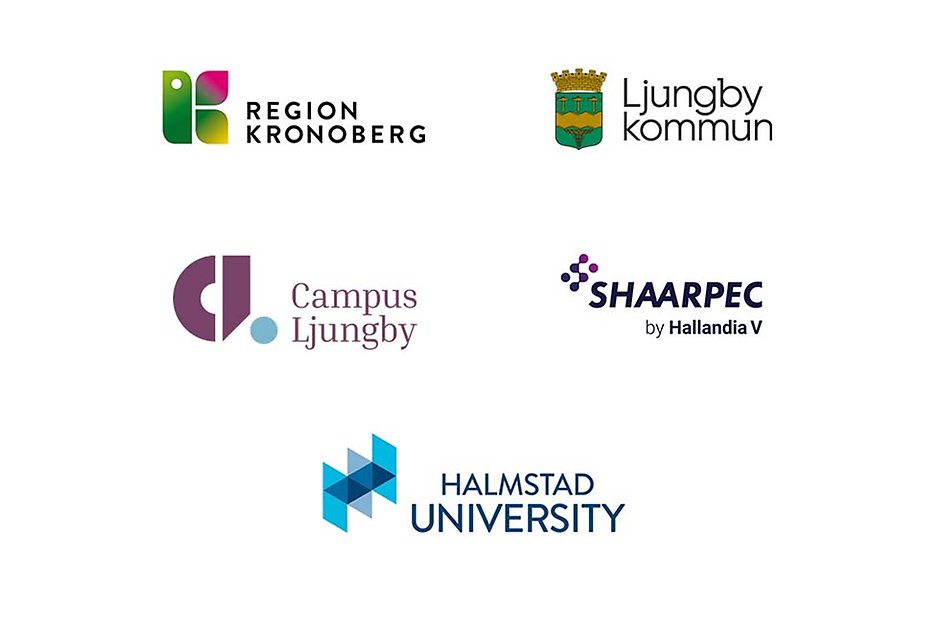Good and close care
As a commissioned research project for Region Kronoberg and Ljungby municipality, researchers at the Health Data Center at Halmstad University will connect data from the region and the municipality. The course of care, efficiency and quality will be studied using AI-based analyzes of patient data.

Coherent care processes
The overall aim of the project is to increase knowledge about how the region and municipality should create well-thought-out and improved coherent care and care processes for patients and users. The specific purpose of the project is to apply AI-based methods for a deeper and improved analysis of patient data with the goal of developing insights that can lead to improvements in cohesive care processes and interventions.
The research aims to:
- examine the possibility of measuring total care consumption for people in both the region and municipality
- investigate whether people in nursing homes consume more or less care
- demonstrate the benefits of graph models applied to patient journeys from different organizations, i.e. the entire care chain.
The study is carried out using individual data on all patients who have used care in Ljungby Municipality during the years 2014-2021 and who were born in 1956 or earlier.
The research is a sub-project on information-driven care in the main project called Good and close care. Good and close care is run by Campus Ljungby in collaboration with Ljungby Municipality and Region Kronoberg. The health technology company Hallandia V is also part of the project, with the analytics platfrom SHAARPEC.
Article in Swedish: Region Kronoberg och Ljungby kommun utsedda till Årets välfärdsinspiratör External link.
External link.
Background
The Swedish Association of Local Authorities and Regions (SKR) and the gouvernment have reached an agreement to further develop close care in 2022. The goal of the restructuring of health care is that the patient receives good, close and coordinated care that strengthens health. The transition to good and close care aims at health and medical care that is provided in a coherent way based on the patient's individual needs and conditions so that the individual's entire life situation can be taken into account. The development of close care does not mean a new form of organization or level of care. Close care is also not a new term for today's primary care. The meaning of the terms close and accessible must be defined based on the patient's needs. It is about an approach that refers to a more person-centred healthcare where cooperation and collaboration between regions and municipalities is central. The goal of the restructuring of health care is that the patient receives good, close and coordinated care that strengthens health.
Primary care needs to interact with specialized care both in and outside hospitals, municipal care and social services as well as other stakeholders that are needed based on the patient's perspective. Close care has health as the focus and cannot be achieved unless primary care and public health work are carried out in close cooperation.
More about the study
The study originates in Region Kronoberg and Ljungby Municipality's ambition to live up to the state's ambitions with good and close care. The study's overall research questions are:
1. How can patient and user data obtained from Region Kronoberg's and Ljungby municipality's respective data warehouses be used in a combined analysis to improve the understanding of care equipment and care flows, care quality and efficiency throughout the entire health care chain (both municipality and region)?
2. How can AI-based analyzes be used as a tool to develop deeper knowledge about care flows, interventions and their effects? By following and optimizing the patient's/customer's flow through the entire healthcare chain (both municipality and region), coordination gains and more cost-effective care and better quality for the individual are expected, leading to a more independent life for the individual.
In order to answer the research questions, the following questions need to be answered:
- What are the most common diagnoses that require the intervention of both Region and Municipality?
- What does the resource consumption (Region, Municipality) look like for the most common diagnoses?
- The patient profile per diagnosis (age, gender, etc.)?
- The patient's experience of the interventions (per diagnosis at Region/Municipality)?
- Study to what extent care for the most common diagnoses aligns with patient-centered and cohesive care processes?
- If possible, identify patterns in health care consumption and patient demographics associated with serious clinical events within 30 days of contact with the unplanned care?
- If possible, identify variables in the record systems that could be used more preventively to increase the quality of life for the individual citizen?
The study is a retrospective registry study of patient and user data in Region Kronoberg and Ljungby Municipality during the period 2014–2021. The study will also collect and, if necessary, analyze data from national registers under the authority of the National Board of Health and Welfare, such as the cause of death register and national quality registers. Medication prescription and collection at the pharmacy are also included. Based on this data and variables, a current analysis of the care and care flow between Region Kronoberg and Ljungby Municipality is prepared, as well as prediction models and variability analysis with the aim of producing indications that contribute to better treatment therapies.
Contact and more infomation
Responsible researcher at the Health Data Centre, Halmstad University:
Project leader at the Health Data Centre, Halmstad University:
Overall project manager is Josephine Jernberg at Campus Ljungby:
God och nära vård (Campus Ljungby webb) External link, opens in new window.
External link, opens in new window.

Partners in the project are Region Kronoberg, Ljungby municipality, Campus Ljungby, Hallandia V and Halmstad University.
published
Updated
share
 Svenska
Svenska